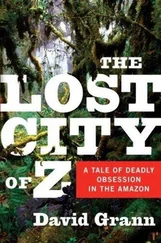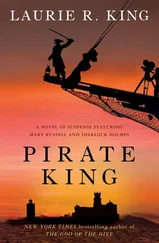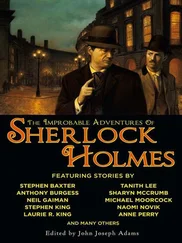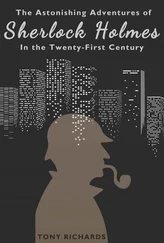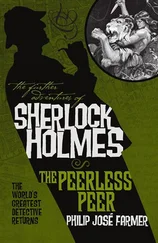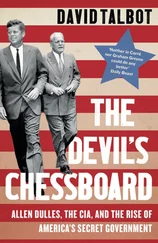Before long, they had merged with other whites at San Quentin to form a single band: the Aryan Brotherhood. While there had always been cliques in prison, known as “tips,” these men were now aligned by race and resorted to a kind of violence that had never been seen at San Quentin, a place that prisoners likened to “gladiator school.” All sides, including the Latino gangs La Nuestra Familia and the Mexican Mafia, attacked each other with homemade knives that were honed from light fixtures and radio parts, and hidden in mattresses, air vents, and drainpipes. “Everything was seen through the delusional lens of race-everything,” Edward Bunker, an inmate at the time, told me. (He went on to become a novelist, and appeared as Mr. Blue in “Reservoir Dogs.”)
Most prison gangs tried to recruit “fish,” the new and most vulnerable inmates. But according to interviews with former gang members-as well as thousands of pages of once classified F.B.I. reports, internal prison records, and court documents-the Aryan Brotherhood chose a radically different approach, soliciting only the most capable and violent. They were given a pledge:
An Aryan brother is without a care,
He walks where the weak and heartless won’t dare,
And if by chance he should stumble and lose control,
His brothers will be there, to help reach his goal,
For a worthy brother, no need is too great,
He need not but ask, fulfillment’s his fate.
For an Aryan brother, death holds no fear,
Vengeance will be his, through his brothers still here.
By 1975, the gang had expanded into most of California’s state prisons and was engaged in what authorities describe as a full-fledged race war. Dozens had already been slain when, that same year, a fish named Michael Thompson entered the system. A twenty-three-year-old white former high-school football star, he had been sentenced for helping to murder two drug dealers and burying their bodies in a lime-filled pit in a back yard. Six feet four and weighing nearly three hundred pounds, he was strong enough to break ordinary shackles. He had brown hair, which was parted in the middle, and hypnotic blue eyes. Despite the violent nature of his crime, he had no other convictions and, with a chance for parole in less than a decade, he initially kept to himself, barely aware of the different forces moving around him. “I was a fish with gills out to fucking here,” he later said.
Unaligned with any of the emerging gangs, he was conspicuous prey for roaming Hispanic and black groups, and several of them soon assaulted him in the yard at a prison in Tracy, California; later, he was sent to Folsom, which, along with San Quentin, was exploding with gang wars. On his first day there, he says, no one spoke to him until a leader of the Black Guerrilla Family, a trim, angular man in shorts and a T-shirt, began to taunt him, telling him to come to the yard “ready” the next day. That night in his cell, Thompson recalled, he looked frantically for a weapon; he broke a piece of steel off his cell door and began to file its edges. It was at least ten inches long, and he sharpened both sides. Before the cell doors opened and the guards searched him, he said, he knew he needed to hide the weapon. He took off his clothes and tried to insert it in his rectum. “I couldn’t,” he recalled. “I was too ashamed.” He tried again and again, until finally he succeeded.
The next morning in the yard, he could see the guards, the tips of their rifles glistening in the sun. The leader of the Black Guerrilla Family circled toward him, flashing a steel blade, and Thompson lay down, trying to extricate his weapon. Eventually, he got it and began to lunge violently at his foe; another gang member came at him and Thompson stabbed him, too. By the time the guards interceded, Thompson was covered in blood, and one of the members of the Black Guerrilla Family lay on the ground, near death.
Not long after this incident, several white convicts approached him in the yard. “They wanted me to join the Brand,” Thompson said. Initially, he hesitated, in part because of the gang’s racism, but he knew that the group offered more than protection. “It was like being let into a sanctuary,” he said. “You were instantly the man-the shot caller.”
To be accepted, according to Thompson and other gang members, each recruit had to “make his bones,” which often meant killing another inmate. (One recruit told authorities in a sworn statement that the rite was intended to “create a lasting bond to the A.B. and also prove that he had what it takes.”) Thompson also recited a “blood in, blood out” oath, in which he vowed not only that he would spill another’s blood to get in but also that he would never leave the gang unless his own blood was fatally spilled. While many new members had a probationary period, which often lasted as long as a year, Thompson, because of his physical strength and his ability with a knife, was voted into the gang almost immediately. He was “branded” with a homemade tattoo gun (which inmates made out of a beard trimmer sold at the commissary, a guitar string, a pen, and a needle stolen from the infirmary). Sometimes members were tattooed with the letters “A.B.” or the numerals 666, symbolizing the beast, a manifestation of evil in the Revelation of St. John. On Thompson’s left hand, just above one of his knuckles, he received the most recognizable symbol: a green shamrock. “All I had to do was show that ’rock and I was in charge,” he said.
He was moved from one state prison to the next, often for disciplinary reasons, but these transfers only helped him garner more influence, and he gradually rose through the Brotherhood’s rarefied ranks. He met Barry Mills, a.k.a. the Baron, who had initially been incarcerated for stealing a car and became the gang’s vanguard member, seemingly concentrating all his energies not on returning to the outside world but on remaining in the inside world, where he was, in the words of Thompson, “the hog with the biggest balls.” And he met T. D. Bingham, a charismatic bank robber who was nearly as wide as he was tall and who could bench-press five hundred pounds. Nicknamed the Hulk and Super Honkey, he spoke in a folksy manner that concealed a burning intelligence, friends say. In photographs from the time, he has a black walrus mustache and a ski hat pulled down over his eyebrows. Part Jewish, he wore a Star of David tattooed on one arm and, without any apparent irony, a swastika on the other. Once, when he testified on behalf of another reputed Aryan Brotherhood inmate, he told the jury, “There’s a code in every segment of society… Well, we have a different kind of moral and ethical code.” He later added, “It’s a lot more primordial.” One of his friends, referring to his propensity for violence, told me, “Sometimes he got the urge, you know what I mean? He got the urge.”
Thompson soon became acquainted with the Brotherhood’s inner sanctum. There was Thomas Silverstein, a talented artist with long flowing hair who, a counsellor noted in his prison file, “seems to be easily influenced by these men and is eager to please them.” After shedding an enemy’s blood with a handcrafted knife, he would often retire to his cell and draw elaborate portraits. One ink sketch showed a man in a cell with a claw reaching down toward him. Thompson also met Dallas Scott, a drug addict who once told the reporter Pete Earley, in the 1992 book “The Hot House: Life Inside Leavenworth Prison,” “In your society I may not be anybody, but in here I am;” and Clifford Smith, who lost an eye after a black-widow spider bit him at San Quentin and who, when asked to carry out his first hit, said, “Yeah, bro, I’ll do the bastard.”
Thompson, who had only a high-school education, was being tailored for leadership. He was given many books, a curriculum that formed a kind of world view. He read Sun Tzu’s “The Art of War” and Machiavelli’s “The Prince.” He read Nietzsche, memorizing his aphorisms. (“One should die proudly when it is no longer possible to live proudly.”) And he read Louis L’Amour, whose pulp novels about romantic gunslingers who ride for “the brand” inspired the gang’s nickname. “It was like you went to school,” Thompson said. “You already hate the system, hate the establishment, because you’re in jail, you’re buried, and you start to think of yourself as this noble warrior-and that’s what we called each other, warriors. It was like I was a soldier going out to battle.”
Читать дальше






